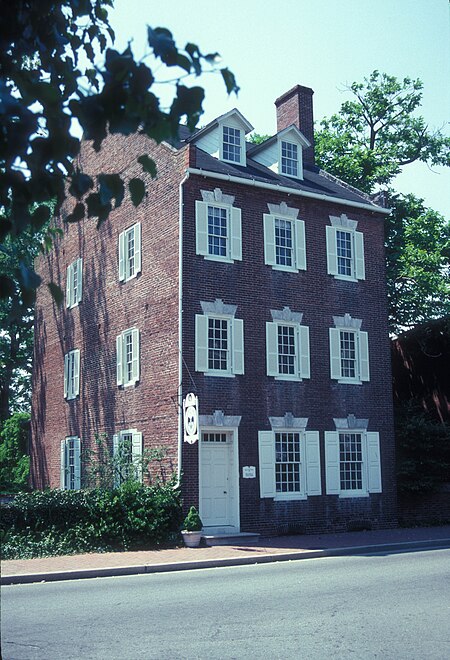Easton Historic District (Easton, Maryland)

The Easton Historic District is a historic district that covers most of the core of the town of Easton, Maryland. The town is the county seat of Talbot County. The state of Maryland is nearly split by the Chesapeake Bay, and Easton is located on the east side of the bay that is known as Maryland's Eastern Shore. Although the town is part of the east coast of the United States, the region's history goes back to a time when Maryland was a colonial province of England. The Easton Historic District was added to the National Register of Historic Places in 1980. It contains approximately 900 buildings mostly built in the 18th, 19th, and early 20th centuries. Many of these buildings are residential, but the original business district, located on the west side, is also included. A notable exception to the continuity of the historic district and the construction dates is the original Quaker Third Haven Meeting House, which was constructed in the 1680s southeast of the main portion of the district.
Excerpt from the Wikipedia article Easton Historic District (Easton, Maryland) (License: CC BY-SA 3.0, Authors, Images).Easton Historic District (Easton, Maryland)
South Street, Easton
Geographical coordinates (GPS) Address Nearby Places Show on map
Geographical coordinates (GPS)
| Latitude | Longitude |
|---|---|
| N 38.771944444444 ° | E -76.073888888889 ° |
Address
South Street 106
21601 Easton
Maryland, United States
Open on Google Maps









